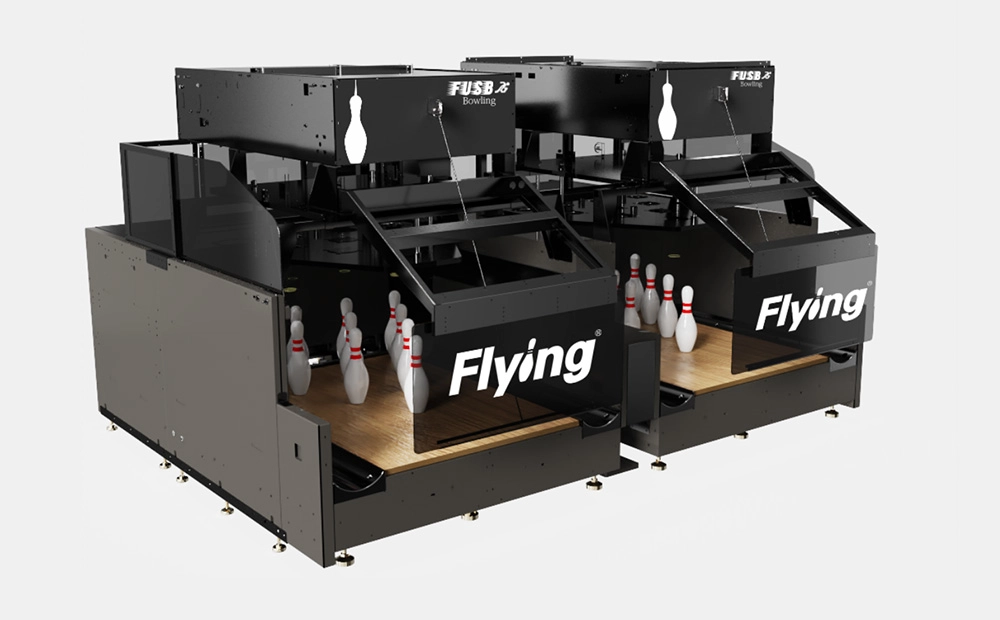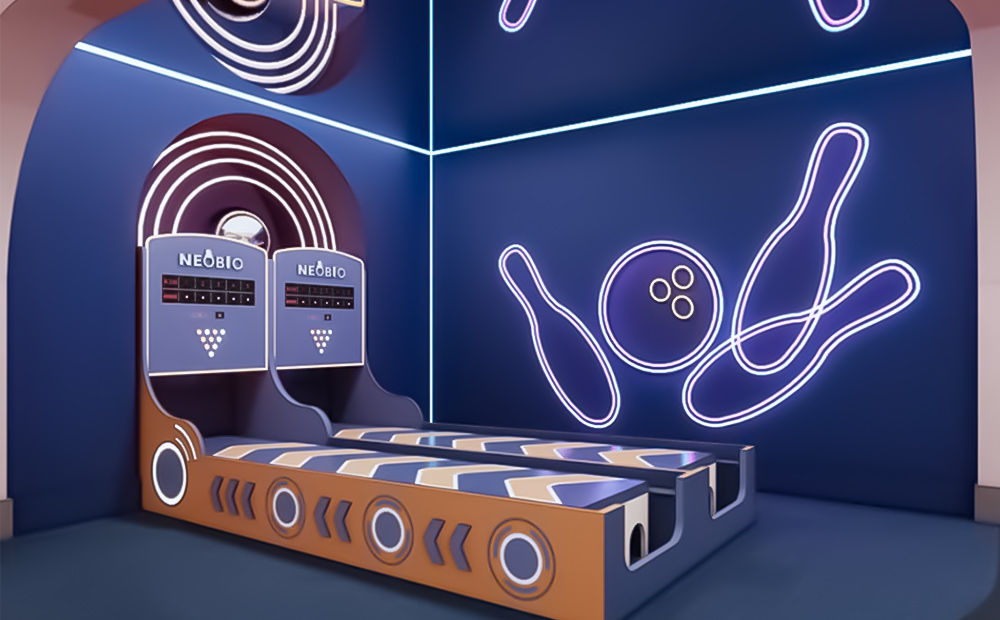How to Successfully Build a String Pin Bowling Alley
Article:
**Introduction**
Building a string pin bowling alley can be a lucrative venture in today's digital sport franchise market. With the increasing popularity of this activity, it's essential to understand the crucial requirements and considerations for a successful venture.
**Understanding the Market**
Before diving into the construction process, it's crucial to conduct thorough market research to identify the demand for a string pin bowling alley in your desired location. Factors such as demographics, competition, and market trends should be carefully analyzed to ensure the viability of the project.
**Planning and Design**
The initial step in building a string pin bowling alley involves meticulous planning and design. From selecting the right location to creating a functional layout that maximizes space and enhances the overall customer experience, this stage sets the foundation for a successful venture.
**Licensing and Permits**
Navigating the bureaucratic hurdles involved in obtaining the necessary licenses and permits is a crucial aspect of building a string pin bowling alley. From zoning regulations to health and safety standards, ensuring compliance with local laws is essential for a smooth and successful launch.
**Equipment and Technology**
Selecting the right string pin bowling equipment and integrating cutting-edge technology can significantly impact the operational efficiency and customer satisfaction of the alley. From choosing the best pin setters and lane surfaces to implementing advanced scoring systems, investing in high-quality equipment is a key consideration.
**Operational Considerations**
Managing the day-to-day operations of a string pin bowling alley requires careful attention to various aspects such as staff hiring and training, marketing strategies, and customer service. Creating a compelling experience for patrons and fostering a positive reputation is vital for long-term success.
**Financial Planning**
Building a string pin bowling alley involves significant financial investment, requiring thorough financial planning to ensure sustainability. Budgeting for construction costs, operating expenses, and potential contingencies is crucial for a sound financial foundation.
**The Future of String Pin Bowling**
As the digital sport franchise market continues to evolve, staying abreast of industry trends and advancements is essential for the sustained success of a string pin bowling alley. Embracing innovation and adapting to changing consumer preferences are key factors for future growth.
**Conclusion**
Building a successful string pin bowling alley requires meticulous planning, strategic decision-making, and a keen understanding of industry trends. By following the essential steps and considerations outlined in this article, operators and entrepreneurs can position themselves for a thriving venture in the digital sport franchise market.
**FAQs:**
1. What are the key factors to consider when choosing a location for a string pin bowling alley?
- Answer: Factors such as demographics, accessibility, and competition should be carefully evaluated when selecting a location.
2. How can technology enhance the customer experience in a string pin bowling alley?
- Answer: Advanced scoring systems, interactive displays, and automated pin setters can significantly elevate the customer experience.
3. What are the essential permits and licenses required for operating a string pin bowling alley?
- Answer: Health and safety permits, zoning regulations, and entertainment licenses are some of the crucial permits needed.
4. How can operators attract and retain customers in a string pin bowling alley?
- Answer: Offering engaging promotions, hosting events, and creating a welcoming atmosphere are effective strategies for customer retention.
How Ten Pin Bowling Began | Flying
How Much to Build a Bowling Alley in Luxembourg? | Flying
How Much to Build a Bowling Alley in Ecuador? | Flying
How Much to Build a Bowling Alley in Honduras? | Flying
Product
How many lanes does it take to open a bowling alley?
There's no strict rule on the number of lanes required to open a bowling alley. It depends on your business goals and target market.
Here's a breakdown to help you decide:
- Small niche alleys: Some bowling alleys might focus on a specific audience, like a boutique bowling alley with just a few lanes catering to a high-end clientele. They might have other revenue streams besides just bowling, like a fancy restaurant or bar.
- Traditional bowling alleys: These typically have many lanes, often around 8 to 24 lanes , to accommodate a larger number of bowlers and maximize revenue through lane rentals.
- Mini bowling: Certain alleys might offer mini bowling, which uses lighter balls and shorter lanes. This could be a good option for a family entertainment center and wouldn't require a large number of standard lanes.
Ultimately, the number of lanes is a business decision based on your target market, budget, and the overall experience you want to create.
How a bowling ball return machine works?
A bowling ball return system uses a combination of gravity, belts, and sometimes lifts to bring your ball back to you after your roll. Here's a breakdown of the typical process:
-
Ball Exit: After rolling down the lane, the ball exits into a channel at the end. This channel might have a slight incline to help guide the ball towards the return mechanism.
-
Transfer Tray: The ball rolls into a shallow tray or trough. This tray might have a diverter at the end to ensure balls from adjacent lanes don't collide.
-
Elevator or Incline (optional): In some setups, the ball might be lifted to a higher level before entering the return system. This creates a steeper decline for the ball to travel down, helping it gain momentum.
-
Belt Conveyor: The ball reaches a conveyor belt with a textured surface to prevent slipping. This belt carries the ball up an incline.
-
Gravity Channel: Once at the top of the incline, the ball is released onto a long, U-shaped channel. Gravity takes over, pulling the ball down through the channel.
-
Ball Deflector: At the end of the channel, there might be a deflector that diverts the ball slightly towards your lane. This ensures the ball ends up in the correct return slot.
-
Ball Return Tray: The ball finally reaches a tray or cradle positioned in front of your lane, ready for your next roll.
Here are some additional points to note:
- Modern systems might have sensors to detect the presence of a ball and activate the return mechanism accordingly.
- Some higher-end systems use quieter materials and designs to minimize noise during ball return.
Bowling Equipment
What is duckpin bowling equipment?
Duckpin bowling equipment is a more adaptable bowling lane. Duckpin bowling has a smaller lane size, and the smaller ball has only two finger holes, whose pins are shorter and lighter than traditional bowling pins. Its length can be customized from 9.6m to 20m, which is more suitable for a variety of miniaturized sites. But the rules of the game and the scoring system are no different from standard bowling. In addition, it can improve the hit rate of players in bowling, so that players can have more fun and fulfillment.
How long is a mini bowling lane?
The length of the Mini Bowling Lane is about 13 meters. The fairway board area is about 7.6 meters. And the approach area is about 2.44 meters. The equipment maintenance area behind the lane requires a minimum of 1 meter.
Price
how much does it cost to put a bowling alley?
The cost of building a bowling alley can vary greatly depending on a number of factors, including:
- Number of lanes: This is obviously a big one. A single lane will cost much less than a whole alley with multiple lanes.
- Location: Building costs are higher in some areas than others. Building in a more populated area will likely be more expensive than a rural area.
- New construction vs. renovation: If you are adding a bowling alley to an existing building, you'll likely save money compared to building a whole new facility.
- Features: Do you want a high-end bowling alley with all the latest technology and amenities? Or are you looking for a more basic setup? The more features you want, the more expensive it will be.
Here's a rough ballpark of what you might expect to pay:
- Home bowling alley: A single lane for your house could cost anywhere from $75,000 to $175,000.
- Small commercial alley: A few lanes in a commercial setting could run from $150,000 to $600,000.
- Large commercial alley: A full-sized bowling alley with many lanes could cost millions of dollars.
If you're serious about opening a bowling alley, it's important to consult with a professional contractor or bowling alley equipment supplier to get a more accurate estimate for your specific project. They can take into account all of the factors mentioned above and give you a more realistic idea of the costs involved.

Flying Ultra Standard Bowling String Pinsetter

Flying Smart Duckpin Bowling
Flying Smart Duckpin Bowling (FSDB) innovative design, standard 9.2-meter short lane, can be shortened in length, compact layout suitable for small spaces. The game rules are simple but challenging, attracting players of different ages to actively participate.
Suitable for social entertainment venues such as bars, billiard halls, and game centers, it not only enhances interactivity, but also increases the popularity and consumption frequency of the venue. The fun and competitive nature of FSDB will make it a new focus of social activities.

Brand New String Pinsetter Mini Bowling Equipment Small Ball And Pin
Flying Cute Mini Bowling (FCMB) is a mini bowling experience designed for children and families. The lane length is fixed at 12 meters, equipped with lightweight balls without finger holes (only 1.25kg) and small pins, specially designed for children and family fun.
It can not only help children feel the fun of bowling, but also stimulate their interest and competitive consciousness. Suitable for children's playgrounds, theme parks and parent-child centers, it is the best choice for places focusing on the children's market.

Indoor Medium Duckpin Bowling Lane Equipment For Bowling Alley
Flying Social Medium Bowling (FSMB) is tailored for small venues, with flexible lane lengths (customizable from 9.6 meters to 18 meters), a small ball design suitable for players of all ages, and light pins that are easier to knock down, increasing participation and fun.
Whether it is a gathering of friends or a casual social, FSMB can easily create a relaxed and pleasant atmosphere. Its efficient space-utilization design is particularly suitable for cafes, bars and community entertainment venues, allowing people to fall in love with bowling in a relaxed interaction.
Contact Flying
Start your custom bowling alley project
If you contact us now for more details, we can provide you with a custom bowling alley service. Our service team will get back to you within 24 hours normally!
© 2024 Flying BOWLING. Designed by gooeyun


